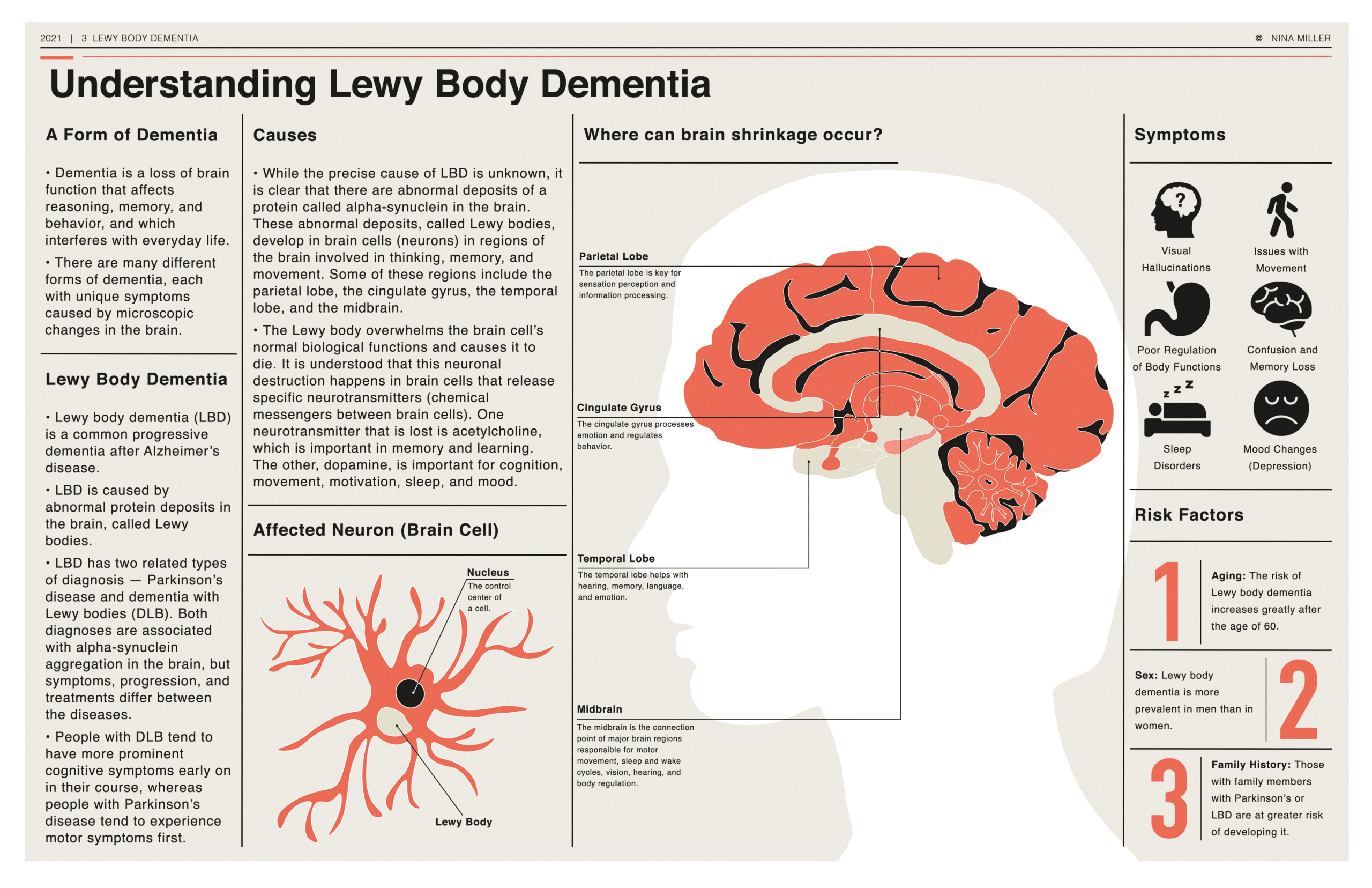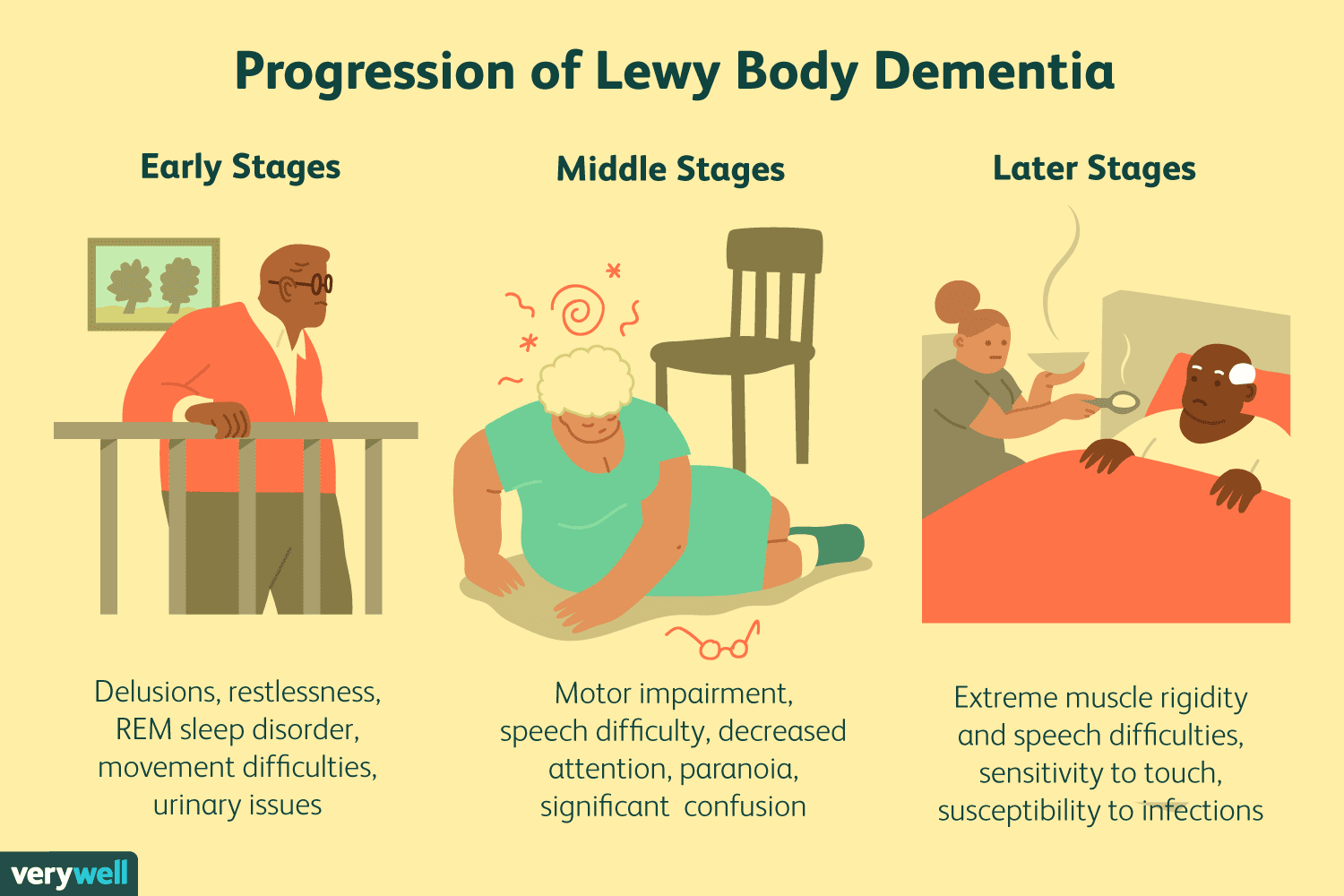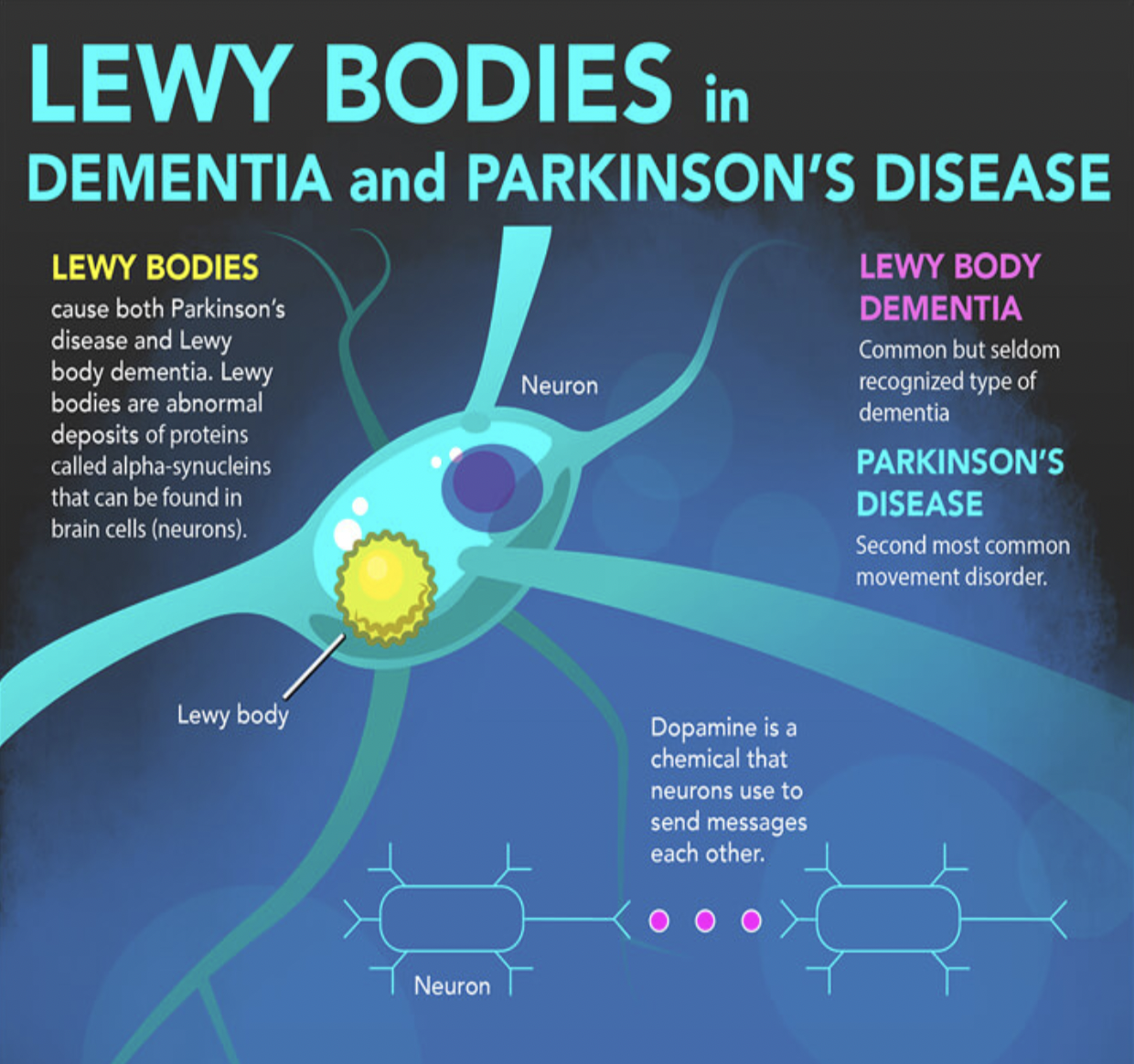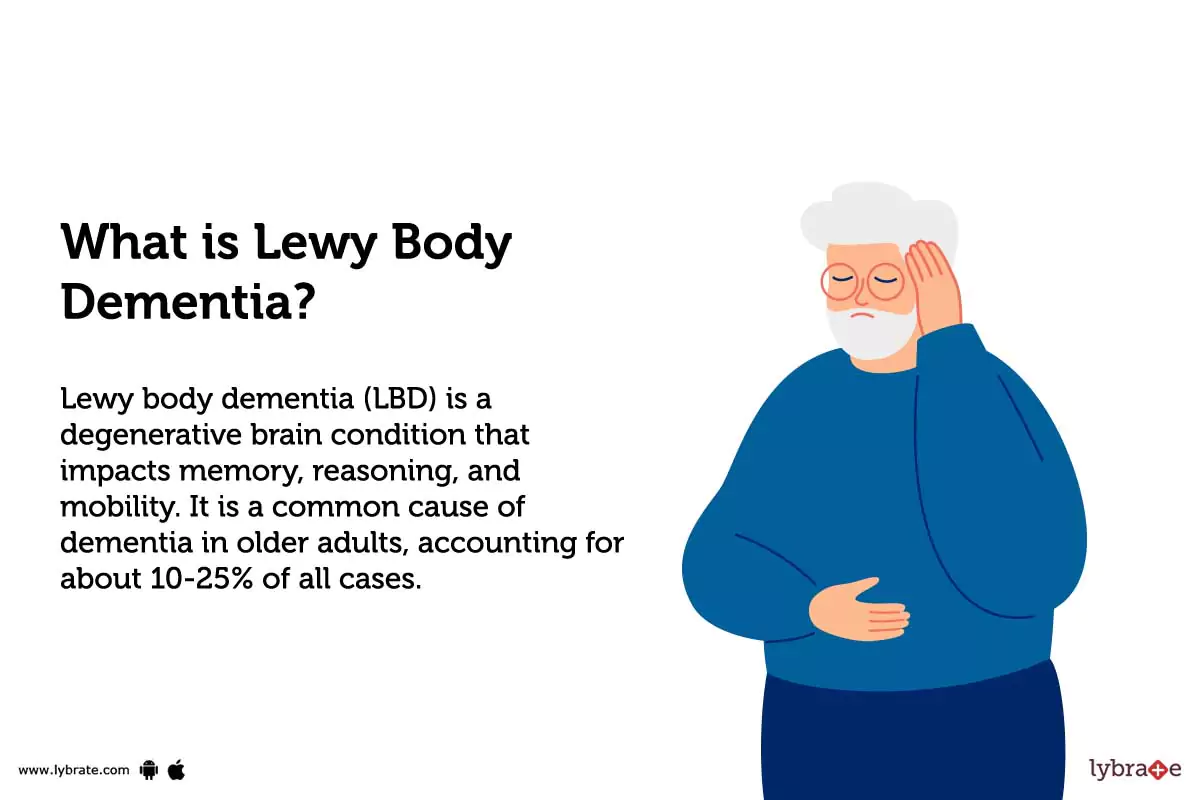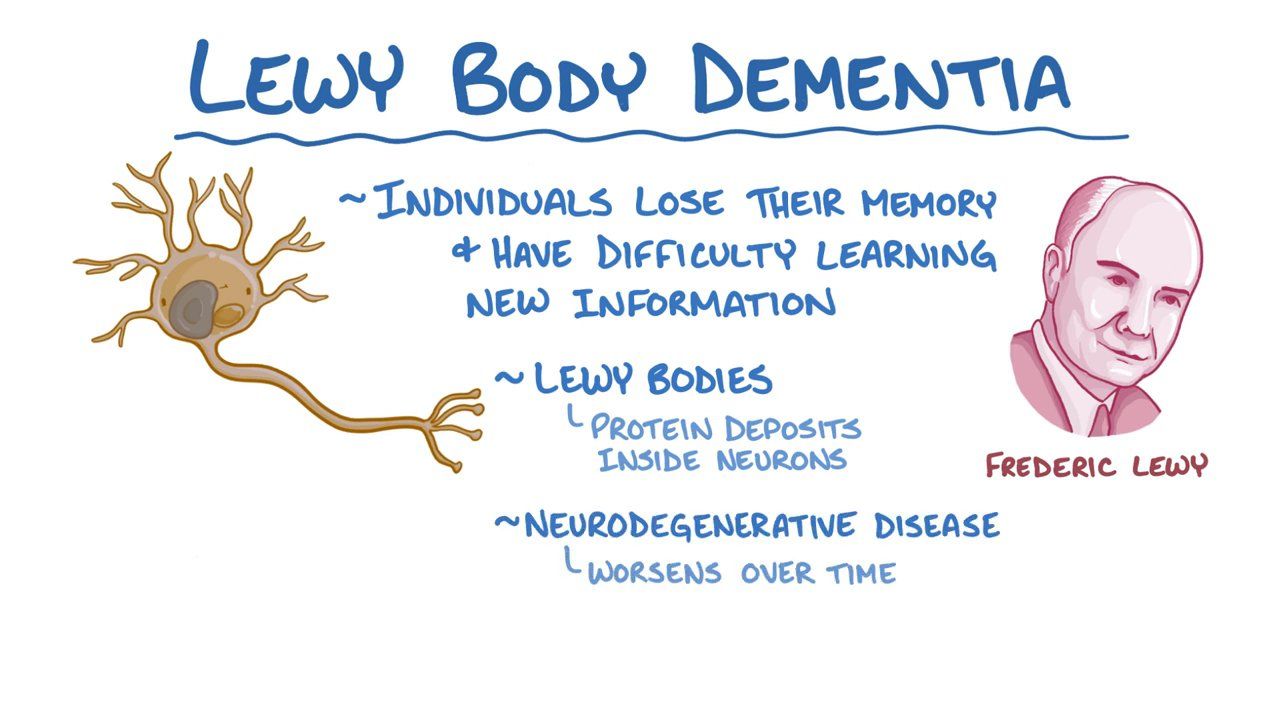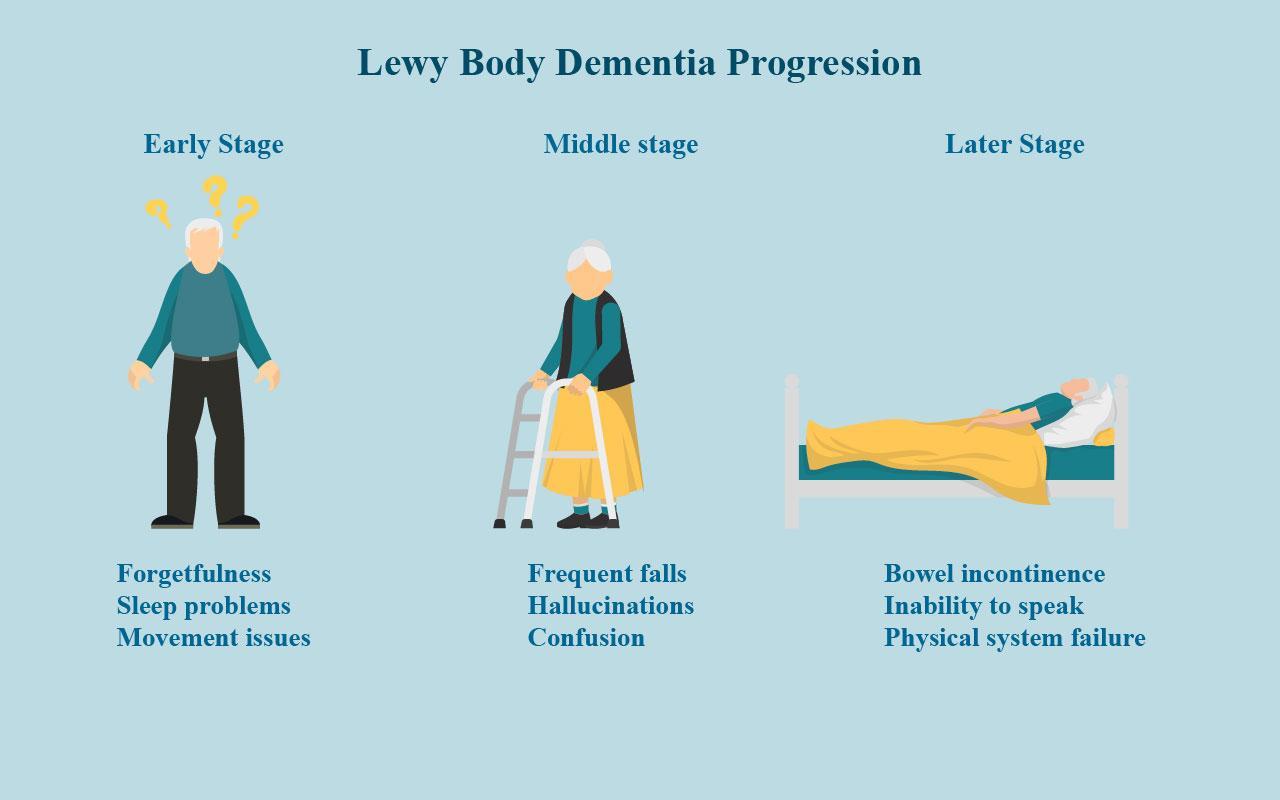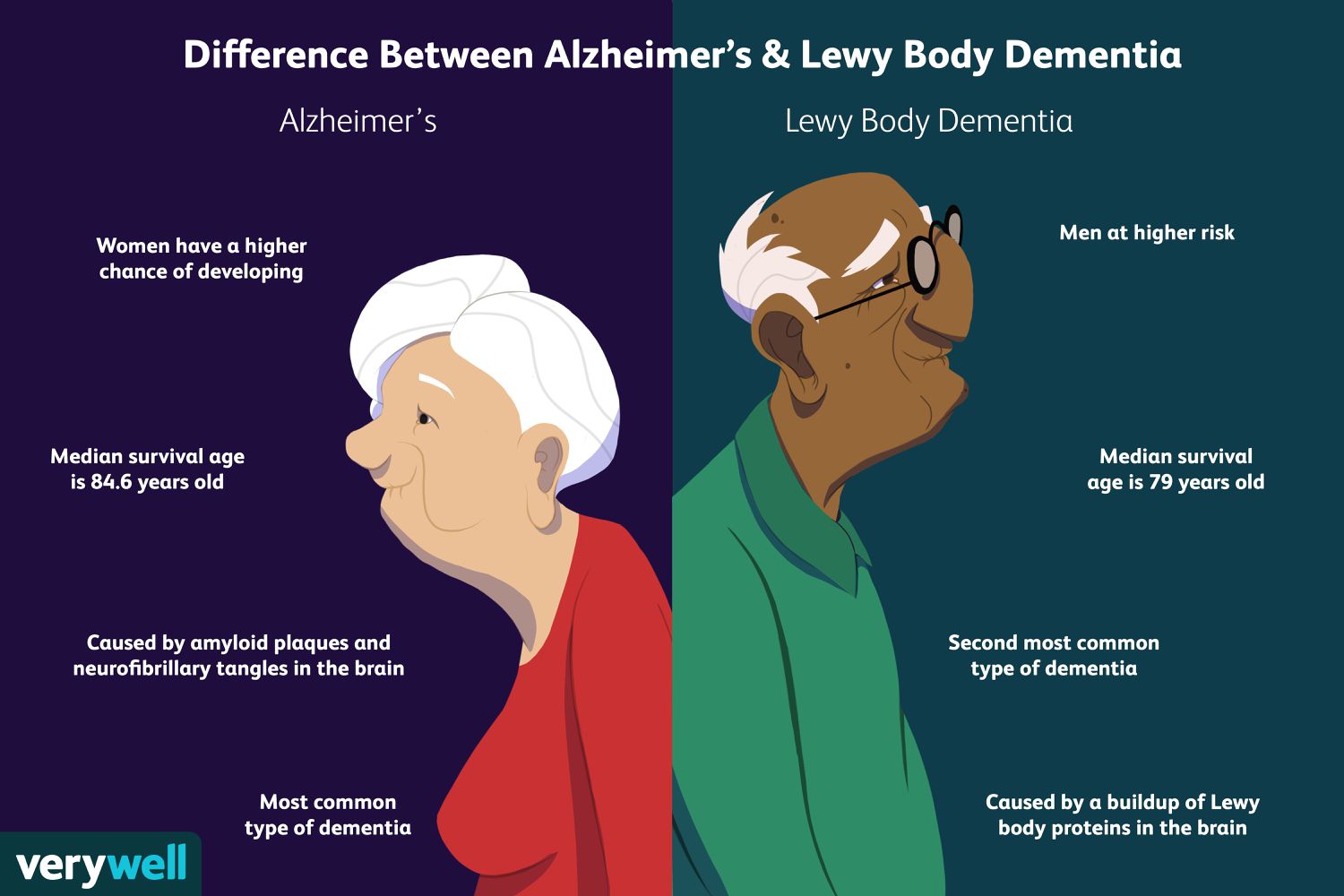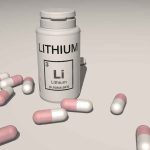
What is Lewy body disease?
Lewy body disease is a disorder where round clumps of protein (called Lewy bodies) build up abnormally in the brain, causing the death of nerve cells. The Lewy bodies affect specific areas of the brain, which leads to symptoms affecting memory, thinking, movement and behaviour.
Lewy body disease is a feature of several conditions, including:
- dementia with Lewy bodies
- Parkinson’s disease
- Parkinson’s disease dementia
The term Lewy body dementia is used to describe the brain changes caused by Lewy bodies that is seen in all the conditions.
What are the symptoms of Lewy body disease?
The symptoms of Lewy body disease include:
- difficulty concentrating and paying attention
- extreme confusion
- difficulty judging distances
- visual hallucinations (seeing things that aren’t there)
- Parkinsonism (slowness, stiffness and tremor)
- a mental state that switches rapidly between thinking clearly and being confused
- delusions
- depression
- disturbed sleep, acting out dreams
- fainting spells, unsteadiness and falls
- problems with understanding, thinking, memory and judgement
If you have any of the symptoms above, see your doctor.
In contrast with Alzheimer’s disease, Lewy body disease doesn’t cause short-term memory loss.
The 3 conditions that fall under the umbrella of Lewy body disease tend to overlap, but there are some differences in the mix of symptoms and the timing of when symptoms appear, that can help to distinguish the individual conditions.
Parkinson’s disease usually involves a person developing symptoms of movement disorder first, including stiffness, slowness of movement and tremor. When dementia develops in a person with Parkinson’s disease, it is usually 10-15 years after the other symptoms and is known as Parkinson’s disease dementia.
Dementia with Lewy bodies has symptoms similar to Alzheimer’s disease — including thinking problems and disorientation, but differs in that mental function fluctuates between good and poor in the early stages.
The problems with thinking and problems with movement usually appear within a year of each other in people with dementia with Lewy bodies. Usually the thinking problems come first. The movement problems include stiff muscles, shuffling when walking and stooping over (in common with people with Parkinson’s disease).
People may also have problems with sleep, including acting out their dreams, which may result in them shouting out or thrashing about in their sleep. This sleep disorder may happen years before the other symptoms of dementia with Lewy bodies.
What causes Lewy body disease?
Lewy body disease is caused by abnormal clumps of protein, called Lewy bodies, developing inside nerve cells in the brain. This leads to the degeneration and death of the nerve cells.
It is not known why Lewy bodies develop. No risk factors have been clearly identified so far, but dementia with Lewy bodies does seem to have a genetic component.
How is Lewy body disease diagnosed?
There is no specific test for Lewy body disease. A person with symptoms of Lewy body disease will usually be examined and assessed to see what mix of symptoms they have and the timing of the appearance of the symptoms. This can help make a diagnosis of Parkinson’s disease, Parkinson’s disease with dementia, or dementia with Lewy bodies.
To make a diagnosis, a neurologist, geriatrician or psychiatrist will assess a person’s thinking and alertness, whether they have hallucinations, Parkinson’s symptoms (stiffness, slowness of movement) and how they sleep.
They may want to ask the person and their family members about symptoms. They may ask a person to do a Mini-Mental State Examination — a short test to check for problems with thinking and memory.
The doctor may also look at blood pressure, heart rate, body temperature and sweating. They may do blood tests to rule out other conditions.
Scans can show degeneration in the brain, but there is no particular appearance that can diagnose Lewy bodies. However, doctors may suggest an MRI or CT scan of the brain to rule out other causes of dementia.
A SPECT (single-photon emission computerised tomography) or PET (positron emission tomography) scan may help to support a diagnosis of dementia with Lewy bodies, but at the moment Lewy bodies can only be confirmed by examining brain tissue after death.
A diagnosis of dementia with Lewy bodies is likely if, alongside dementia, a person has the characteristic symptoms of:
- visual hallucinations
- slowness, stiffness and tremors, as with Parkinson’s disease
- a fluctuating mental state
- REM sleep disturbance with acting out of dreams (such as yelling out or thrashing about while asleep)
In Parkinson’s disease dementia, the muscle and movement symptoms are often more severe than the mental problems.
The sequence of symptoms can help to narrow down the Lewy body disease diagnosis to a specific condition:
- If brain/thinking symptoms appear years after the muscle and movement problems, then it is more likely a person has Parkinson’s disease dementia.
- If the movement problems start around the same time as a person’s mental function starts to decline, then dementia with Lewy bodies is more likely.
How is Lewy body disease treated?
There is no cure for Lewy body disease and it will progress. Although there are no specific medicines to slow or stop its progression, there are treatments that can help with some of the symptoms. Treatment is tailored specifically to the person, as symptoms vary so much in people with Lewy body disease.
Some of the medicines have unwanted side effects, and so a person needs to be monitored closely, as treating one symptom may worsen another symptom.
Some of the medicines that may be used to treat symptoms are:
- Alzheimer’s disease medications — to reduce hallucinations and help with thinking and behavioural problems
- Parkinson’s disease medications — to improve rigid muscles and slow movement
- medicines to help with sleep and REM sleep behaviour disorder
Some medicines, such as first-generation antipsychotics, can cause severe reactions in people with dementia with Lewy bodies and may be dangerous. So, if antipsychotics are prescribed, they will be the newer medicines.
Other therapies and support that can help manage symptoms include:
- physiotherapy, occupational therapy and speech and language therapy
- providing cognitive stimulation, such as memory exercises
- physical exercise, which can improve thinking, movement symptoms and mood
- relaxation exercises, which can calm a person down
- changing a person’s immediate environment to help them function (for example, reducing clutter and noise)
- creating structure and daily routines
What is the outcome for a person with Lewy body disease?
People with Lewy body disease can often function fairly well in the early stages, but then usually need help at home as the disease progresses. How quickly the disease progresses varies from person to person.
As Lewy body disease progresses, the Lewy bodies become more widely spread in the brain. As more areas of the brain are involved, people with Parkinson’s disease and people with dementia with Lewy bodies tend to develop more similar symptoms. The people with Parkinson’s disease develop dementia symptoms and the people with dementia with Lewy bodies develop more movement problems.
As a person’s thinking and ability to move become more affected, they will need more support with daily living. Eventually, people may need residential care when they become dependent on others for help with everything.
